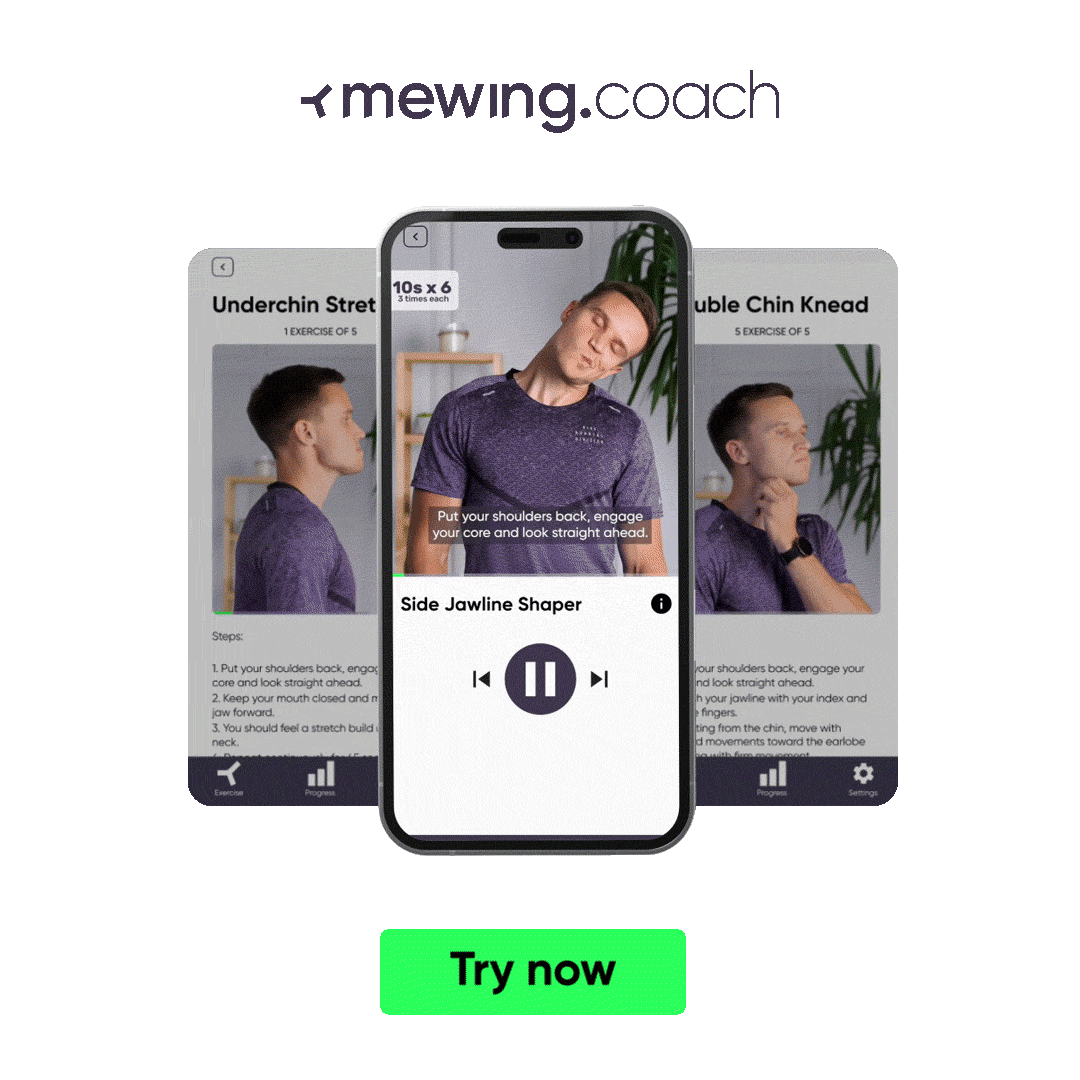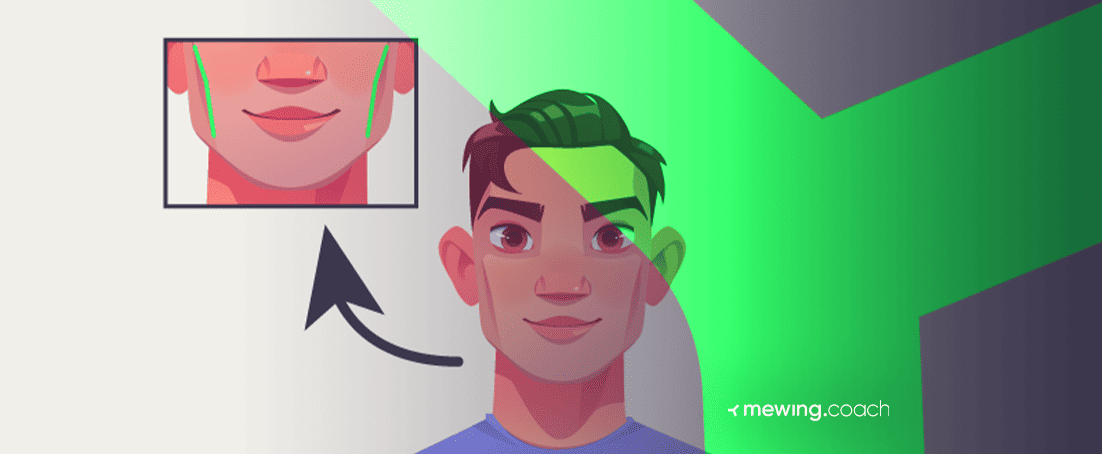
Strengthening your jaw and facial posture and improving teeth alignment is possible with the help of a non-invasive procedure known as mewing. This decades-old practice offers countless benefits and improves your appearance within months.
If you want to reap the rewards of mewing and experience some astounding results, keep reading to learn:
-
📝 What mewing is, where it came from, and what it does
-
📝 The main benefits
-
📝 How mewing improves your general appearance
-
📝 How mewing can affect your overall physical health
-
📝 How mewing work can impact your mental health.
So, if you’re ready to learn, let’s jump into it!
What Does Mewing Do?
Mewing is the practice of proper tongue posture and lip and teeth alignment with one goal in mind: promoting good oral health and facial stability.
The term originates from the name of the British orthodontist John Mew who pioneered the idea currently trending as mewing, a.k.a social media’s alternative to orthognathic surgery.
But Dr. John Mew’s invaluable service has been met with a significant degree of controversy and disapproval by other wellness professionals. The General Dental Council even revoked his dental license after his continuous efforts to draw attention to his revolutionary findings.
Fortunately, his son – Dr. Mike Mew – has undertaken the task of promoting the practice by associating it with other general oral health topics, drawing the attention of other medical professionals.
The idea behind the mewing practice revolves around the proper tongue placement method. By simply placing the tongue against the roof of the mouth, sealing the lips, and focusing on nose breathing, you can experience a number of health and cosmetic benefits.
Mewing can prevent the formation of a misaligned jaw and TMJ/TMD issues in children, improve facial symmetry, and even aid sleep problems and diseases.
If you are unsure how to start mewing, you can check out our website for countless more information on the topic.
How Can Mewing Restore Your Face: The Benefits
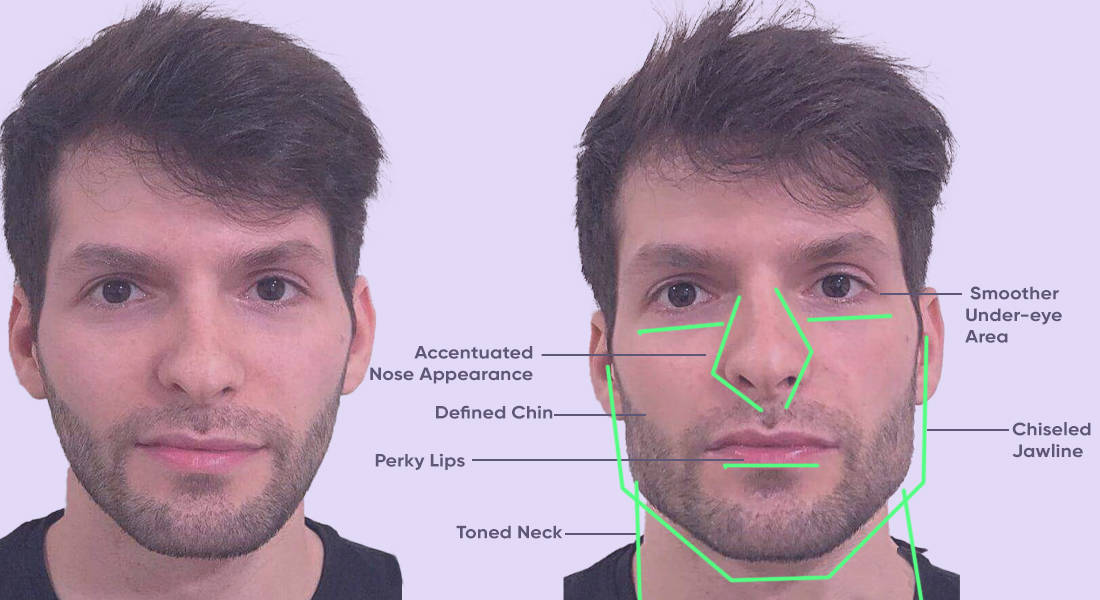
Think of mewing as a workout for your face. If you spent an hour at the gym for a year, you’d grow stronger and get more toned muscles. So, if proper exercise can change the appearance of the body, it must be able to change the appearance of the face, as well.
For the ultimate mewing transformation, read the benefits it offers health-wise and appearance-wise:
Chiseled Jawline and Smoother Under-eye Area
If you’ve always wanted to have a well-defined jawline, there is a special mewing technique for jawline that can help you strengthen it without jaw surgery. And although it might seem a bit counterintuitive, proper tongue posture can also affect the appearance of your eyes.
The mewing effects on the eyes include:
- Preventing sunken eyes
- Smoothing the delicate under-eye area
- Decreasing the distance between the eyeballs.
- Contributing to the sharper, deep-set look often referred to as *hunter eyes
* Hunter eyes are characterized by a horizontally aligned, slightly deep-set eye shape that gives a more alert, attractive, and confident appearance. If you’d like to combine mewing with targeted techniques, here’s a guide on how to get hunter eyes naturally.
Accentuated Cheekbones and Nose Appearance
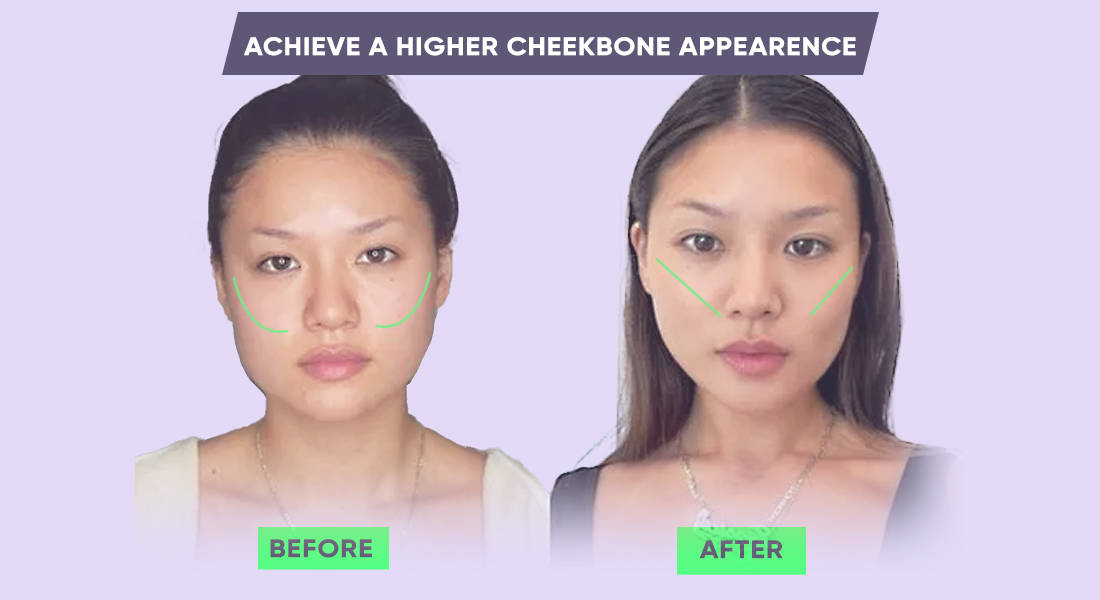
Mewing can work wonders for your cheekbones as well. By practicing, you will have more defined cheekbones without any aggressive treatment – just ensure you are doing the exercise correctly.
Mewing will not change your nose’s shape or actual size, but it can definitely affect its apparent shape. The mewing benefits for the nose include reshaping the nose to make it seem smaller or less crooked. The latter is great if you want to breathe better.
Healthy Mouth and Perky Lips
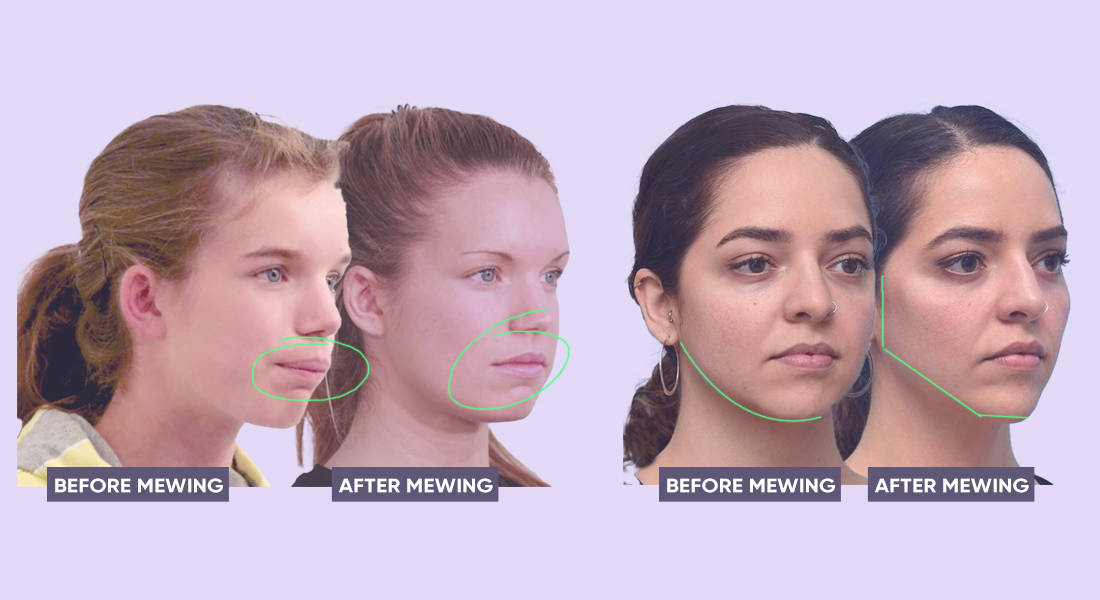
Proper tongue position in the mouth can improve overall oral health. If you think your lips are a bit droopy, you’d be glad to hear that mewing can lift your lips – all you need to do is commit to the practice every day and ensure you are doing it correctly.
Defined Chin and Toned Neck
A good mewing for the chin and neck can do wonders for their look, muscle strength, and functionality. For the neck, in particular, mewing can give it that nice, toned, and elongated shape.
A Right Tongue Position in the Mouth
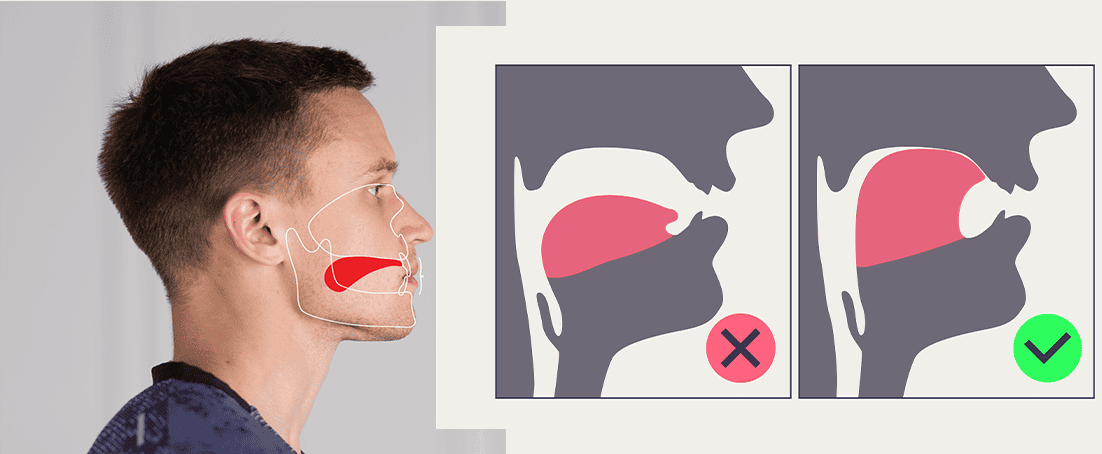
The correct tongue position for mewing requires that your tongue rests on the roof of the mouth. Although the tongue feels the most natural here, we tend to move it around and keep it in places that can cause asymmetry on one side of the face, droopy cheeks, crooked teeth, and more.
By practicing mewing for the tongue, you’ll ensure your tongue is flat against the roof of the mouth with the tip just behind the front teeth, without touching them.
If you’re a beginner and in need of some guidance, you can check out our Mewing.coach app to help you get started.
The app offers some valuable features, like:
- Video tutorials of proper mewing techniques and exercises
- Up-to-date and comprehensive educational content to promote understanding
- Daily reminders to help you stay on track, and more.
How Mewing Elevates Your Overall Look
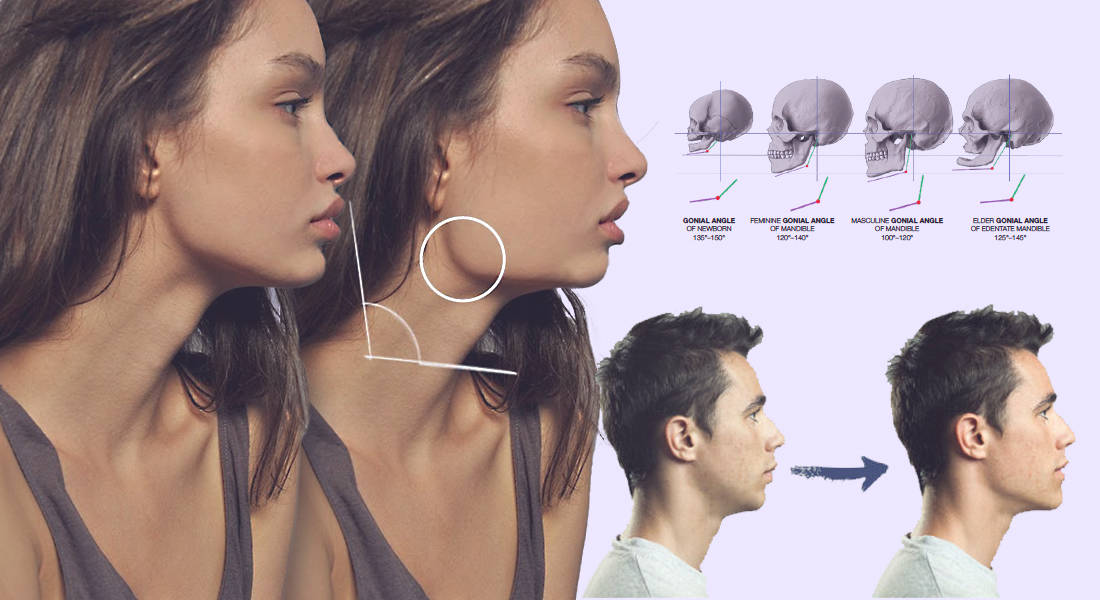
The aesthetic benefits of mewing are countless. The simple act of correct tongue placement can unleash a chain reaction in your entire face.
Bringing your tongue to the roof of your mouth, you help your face to grow forward instead of dropping down and lengthening. This causes improved alignment of the mouth and nose and promotes healthy and attractive facial structure.
But it doesn’t stop there! Mewing will improve not only the appearance of your face shape and features but also your body posture.
Check out some more benefits of mewing:
- Better facial appearance. Strong jaw, carved cheekbones, and symmetrically sculpted face are just some of the benefits of adopting the mewing practice.
- More muscular facial structure. A good mewing technique will strengthen your facial muscles, and we all know toned muscles always look better and younger!
- Improved profile look. Mewing can enhance facial symmetry and help with a receding chin, giving your profile a better look.
- Overall appeal. With enough practice, mewing can elevate your overall appeal and attractiveness, which, in turn, makes you feel more confident.
- Improved photogenic qualities. Since mewing can make you feel and look like your best self, this will also be reflected in the photos you take. It’d be nice to bust the myth that not all people are photogenic, right?
- Boosted lower face shape and alignment. If you feel compelled by all of the benefits of mewing and want to fix your misaligned teeth or improve your jawline without surgery, download our Mewing.coach app – start by clicking the button below.
How Mewing Helps With Different Health Conditions
Mewing is mainly a preventative practice, although some claim they’ve also experienced corrective results. In some cases, it can even help patients avoid oral and maxillofacial surgery.
If you’re interested in this technique to treat a particular condition or improve a target area, it’s probably best to talk to your doctor or another medical professional to resolve potential medical concerns.
Unfortunately, there is just not enough evidence from authoritative experiences to support any claims that mewing has definitive medicinal benefits. They are yet to be proven with peer-reviewed studies and relevant experience.
However, many people who’ve adopted exercise as a DIY technique have reported an overwhelming number of benefits of mewing.
Here are some health conditions that can be improved with mewing:
Reduced Sleep Apnea

Sleep apnea is a common and serious medical condition in which breathing rapidly stops while sleeping. It is typically accompanied by loud snoring and gasping for air while sleeping.
This sleep disorder has numerous adverse effects on people’s health, such as:
- Poor sleep
- Irritability
- Decreased energy levels
- Morning headaches.
A lot of health-related media websites suggest that you can mew to help with sleep apnea, and you should. Proper tongue position while sleeping will allow better air circulation in the airways, which, in turn, will help with sleep apnea.
A correct and consistent mewing practice can promote the growth of the maxilla – the upper jaw – which helps relieve pressure on the airway. Talk to a qualified healthcare provider to help you securely process and incorporate this information into your daily routine to improve sleep apnea.
Boosted Energy Levels
A lot of popular articles suggest that mewing can cause energy levels to jump. This is a given since we already mentioned that it improves breathing. Better, unobstructed breathing results in increased oxygen levels which drive the energy up and improve the overall quality of life.
Better energy means better social life, more strength for exercise, and improved concentration and mental robustness.
Better Overall Posture
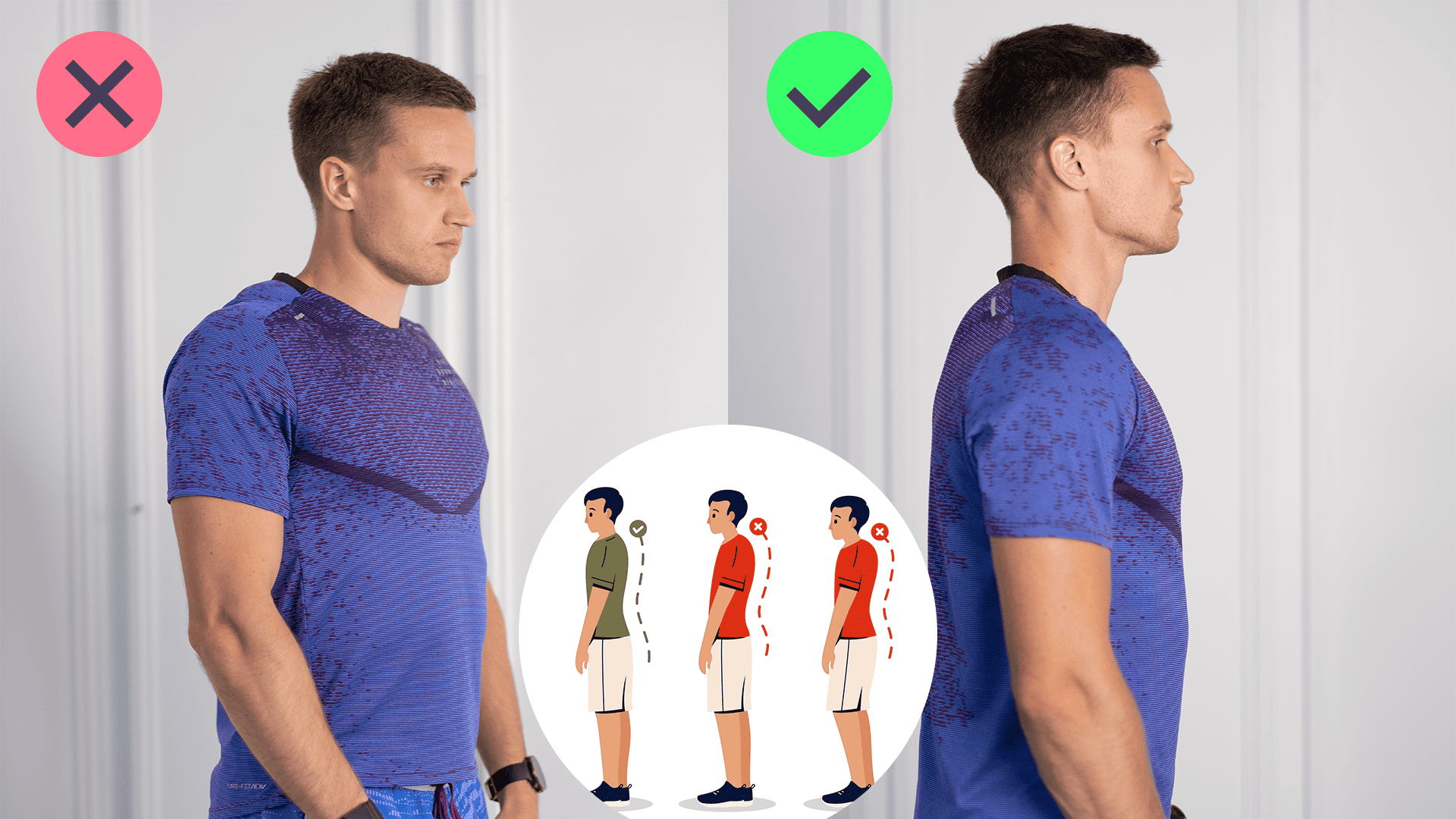
Mewing doesn’t just affect the face – it extends way below to include the neck, shoulders, and part of the spine. And since the body is connected, when one part improves – the rest does as well.
Being mindful of the posture of your face will cause you to become aware of how you carry your entire body. After all, a proper mewing practice requires you to sit up straight with your feet planted firmly on the ground, and knees, hips, and arms in proper alignment.
If you like, you can think of your mewing practice as a form of meditation and exercise that will benefit your mind, body, and spirit.
Relieved TMJ Problems
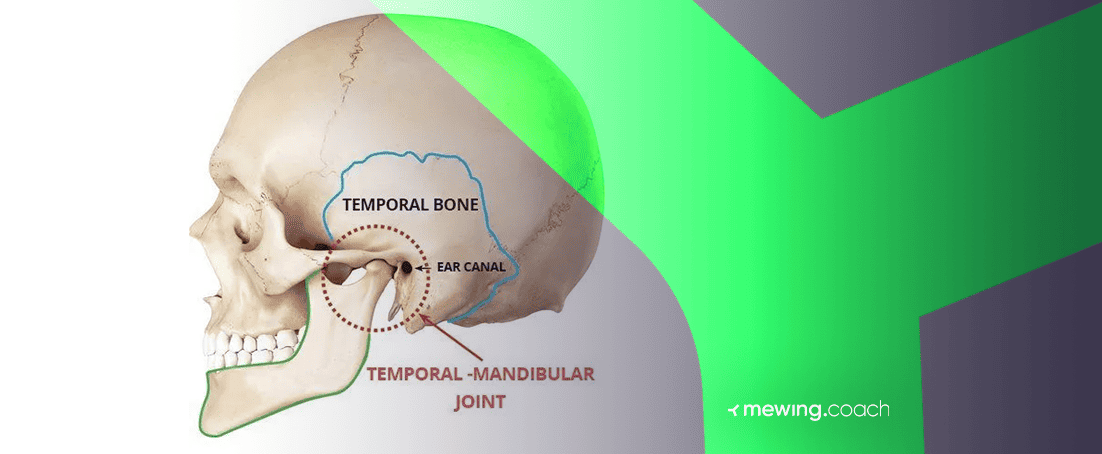
A lot of people suffer from Temporomandibular disorders (TMD). These disorders affect the temporomandibular joint (TMJ) – the joint which connects the upper and lower jaws.
Common symptoms of TMJ disorders include:
- Facial and jaw pain
- Difficulty chewing
- Cracking of the jaws
- Misaligned jaws
- Ear pain
- Tender jaw
- Jaw locking.
TMD can be developed at any age and can be a result of a number of factors, including:
- Genetics
- Arthritis
- Teeth clenching
- Injuries
- Improper jaw posture.
Many people have found that TMJ and mewing work well when done correctly. The technique can help reduce pain, aid with proper alignment of the jaws, and, in some cases, prevent the need for jaw surgery.
If you have severe TMD, talk to your dentist, orthodontist, or other qualified healthcare provider before you embark on your mewing journey.
Improved Bimaxillary Protrusion

A bimaxillary protrusion is a forward inclination of the upper and lower front teeth and the alveolar bone, often pushing the lips and causing them to look bulbous and separated. People with bimaxillary protrusion tend to place their tongue forward, pressed against the front teeth.
When it comes to bimaxillary protrusion and mewing, the technique can be a good treatment for this condition. And if done correctly and from an early age, it might eliminate the need for more serious medical treatments.
Decreased Snoring

If you tend to wake up everyone in the house with loud, ear-splitting snoring, we’ve got some news for you. It’s been shown that mewing helps prevent snoring!
As we already mentioned when discussing sleep apnea, mewing can help reduce snoring. You will significantly improve your sleep by allowing the air to move in and out through your nose.
If you are someone who has trouble keeping their snores in order, or you share a bed or a room with a snorer, mewing exercises can help align the face and find proper channels for the air to move.
Corrected Underbite

Correct mewing can help with misaligned jaws, improve jaw posture, and fix underbite problems.
An underbite is a condition that some people have where their lower jaw and bottom teeth overlap the upper jaw and top front teeth. This abnormal alignment of the jaws can cause TMJ problems, chronic bad breath, sleep apnea, mouth breathing, etc.
A good mewing technique can have astounding results – especially in children – and may eliminate the need for wearing orthodontic devices.
Improved Crossbite

A crossbite is a bite problem or a malocclusion where the upper and lower teeth cannot come together correctly, resulting in a misaligned bite.
Among other issues, crossbites can cause significant bite and breathing problems, as well as speech impediments.
Try a crossbite mewing exercise if you’ve noticed that your child or a loved one has misaligned teeth or struggles to connect the upper and lower jaws. It will help reshape the jaw and place it where it belongs, thus correcting the crossbite.
An early preventative practice can help you avoid the need for braces later in life.
Help With Overbite
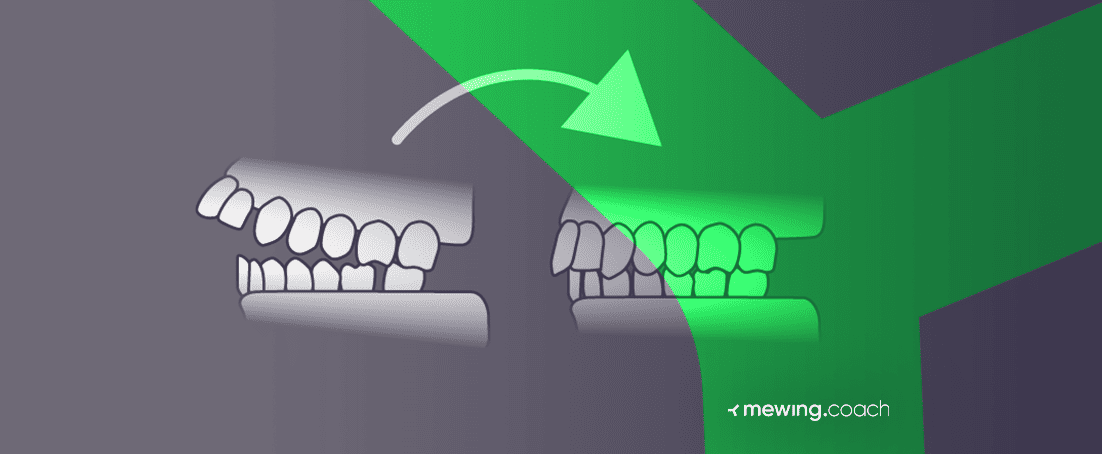
Can mewing prevent overbite? Yes, mewing with an overbite is possible and recommended to do!
An overbite is the opposite of an underbite. Instead of the lower jay coming forward, in people who have an overbite problem, we see a protruding top jaw.
Although a slight overbite is normal – meaning your top teeth should overlap the bottom teeth to a certain degree – when the overlap is more excessive, it can cause a number of different problems.
Some of the most common problems that occur as a result of an overbite include:
- Difficulty breathing
- Chewing challenges
- Painful jaws
- Gum disease
- Speech problems
- Tooth decay
- Palate damage from bottom teeth.
When implemented from an early age, mewing can have a preventative and, to some degree, a restorative effect on this condition.
Overcome Bruxism
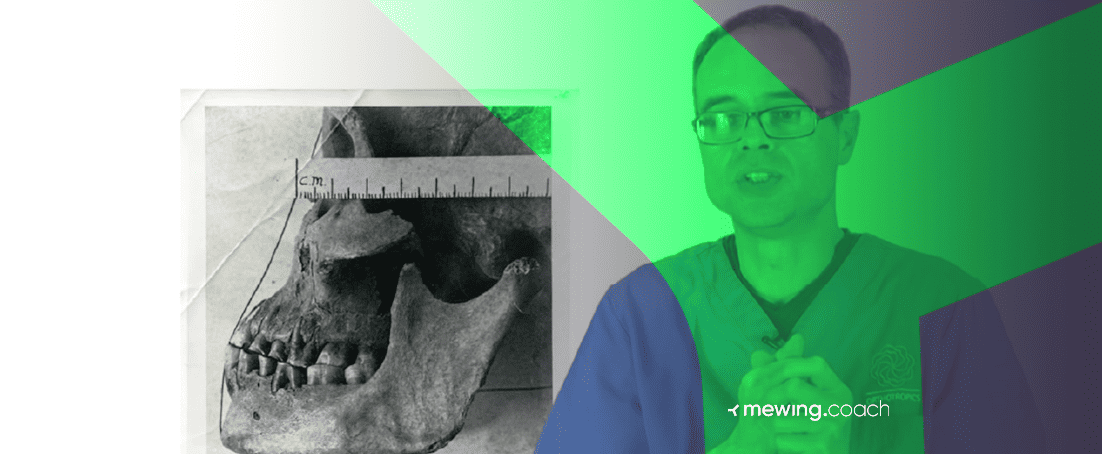
There is even some evidence suggesting that mewing can help overcome bruxism. Bruxism is the condition of grinding, gnashing, or clenching one’s teeth while awake or asleep.
This condition can cause a lot of damage to the teeth because it creates a lot of wear.
Some of the symptoms may include:
- Producing crackling sounds from clenching or grinding the teeth
- Flattened, worn-out teeth
- Cavities
- Tired or tight jaw muscles
- Soreness in the jaw, face, and neck
- Interrupted sleep
- Headaches
- Earache.
The idea that mewing can help cure bruxism postulates that the tongue, when placed correctly on the roof of the mouth, can act as an antagonistic muscle to the chewing muscles causing the problem.
So, consider doing some mewing exercises if you grind, gnash, or clench your teeth in your sleep or while awake.
Learn more about bruxism and mewing here – this page contains all information you need to know if dealing with this condition.
Mewing and Mental Health
Mewing doesn’t just do wonders for your physical health and appearance but can also significantly improve your mental health. By altering your physical look, it can affect the way you see yourself and help raise your self-confidence levels.
Perhaps you’ve always felt a little insecure about your weak jawline, receded chin, crooked teeth, or asymmetrical face. When the conditions that are the roots of your insecurities begin to change and improve, those deep-seated self-resenting feelings will melt away.
It seems that mewing truly is a gift that keeps on giving! It’s incredible how such a small, seemingly insignificant practice can affect the entire being, both physically and non-physically.
Mewing as a Mindfulness Technique
At first, mewing requires some conscious effort to place the tongue in the right position and perfect your nose breathing technique.
This direction in consciousness can be an excellent opportunity to practice mindfulness and reduce anxiety. It can be your own little meditation practice.
If you are someone who enjoys yoga, you can think of mewing as a face yoga practice:
- First, carve out some time each day to sit down and focus on your mewing. You can make it a whole-body experience by drawing attention to aligning your body properly before you begin.
- Try to sit up straight with your feet firmly on the ground. Place your palms on your knees and lengthen your spine as much as you can. Pull your shoulders back and elongate your neck.
- Once you bring your attention to your mouth, focus on bringing your tongue to your upper palate. Try not to use too much pressure and remember, your entire tongue should rest against the palate, not just the tip.
- When you find the proper tongue posture, try to focus on your breathing. There shouldn’t be any gaps between your lips, and mouth-breathing should not be possible. The air should come in and out through your nose.
- While you are mewing, you can draw intense attention to your mouth. Concentrate on the feeling in your tongue as it brushes against every nook and cranny on the roof of your mouth. You can focus on all the sensations present in your oral cavity, thus shifting away from your problems and stress.
Give this mindfulness practice a try, and you’ll experience amazing results and elevate your looks, health, and inner peace levels.
When Is Mewing Most Beneficial?
Children are more susceptible to change, so adopting mewing early on will have the most beneficial results. Because their bodies are more malleable, they can be shaped and corrected more easily.
A child that is about 5 or 6 years old will definitely see results even in the first few months upon starting the practice. Adults, on the other hand, may have to wait a bit longer. For instance, a 45-year-old cannot expect to fix their underbite that’s been developing for decades overnight.
But, if you think you’re too old to mew, you are definitely not! It is never too late to adopt a good habit, and even if it doesn’t work wonders for your appearance, you will certainly experience some of the benefits that mewing offers. You can increase your energy levels, aid your sleep, and even decrease your anxiety.
Regardless of your age, if you are dealing with jaw dislocation, tongue misalignment, crooked teeth, or a wrongful bite, mewing can be a fabulous treatment to consider.
You can resort to mewing when you want to:
- Strengthen the overall performance of your face
- Deal with asymmetry
- Fix neck and jaw issues
- Build yourself a well-defined jawline
- Fix TMJ issues
- Deal with Balls’ Palsy
- Give your face, neck, and shoulders some well-needed stimulation.
So, Is Mewing Healthy or Bad for You?
Firstly, there is no age limit to mewing – anyone that learns how to do it correctly can reap its benefits. Nonetheless, mewing can be dangerous in some situations, e.g., when done incorrectly.
It’s probably wise to consult a professional before you take up the exercise on your own. They will help address some of your concerns and ensure mewing is the right course of action for you.
If they give you the green light – the next course of action is to download our Mewing.coach app.
Mewing.coach is your go-to mewing pal you can take anywhere with you. Since it’s recommended that you learn how to mew even in your sleep, it’s good to know you always have someone accompanying you on your journey.
Answer some trivia about yourself, and Mewing.coach will curate a mewing plan just for you. Indeed – mewing has never been easier!
